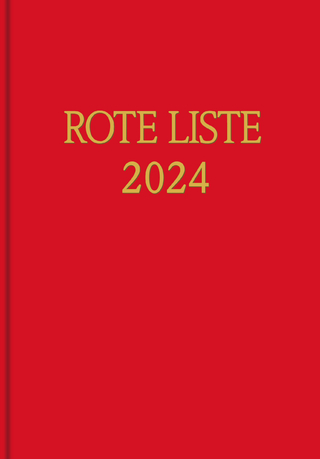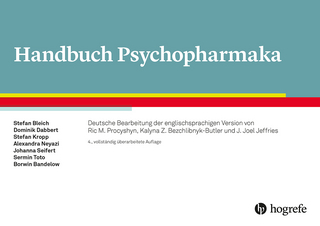
Good Laboratory Practice
Springer Berlin (Verlag)
978-3-642-44103-5 (ISBN)
I. What is Good Laboratory Practice All About?- 1. Introduction.- 2. The History of GLP.- 2.1 The Early Days and the Causative Events.- 2.2 The First Regulations.- 2.3 International Ripples: The OECD Principles.- 2.4 The Principles and Their Interpretation.- 2.5 Closing the Circle? - The Detection of Test Item in Control Samples.- 3. The Idea Behind GLP.- 4. The Areas of Application.- 5. The Pillars of Good Laboratory Practice.- 6. Where Can GLP be Profitably Applied?- 7. GLP and Other Laboratory Quality Systems.- II. How is Good Laboratory Practice Regulated?- 1. Introduction.- 2. Definitions in GLP.- 2.1 Good Laboratory Practice.- 2.2 Management.- 2.3 Study Director and Principal Investigator.- 2.4 Test Facility and Test Site.- 2.5 The Study.- 2.6 Short-Term Studies.- 2.7 Initiation, Starting and Completion Dates.- 2.8 Study Plan, Amendments and Deviations.- 2.9 Raw Data 94.- 2.10 The Phases of a Study.- 2.11 The Master Schedule.- 2.12 Test and Reference Item.- 2.13 Additional Definitions.- 3. Responsibilities in Good Laboratory Practice.- 3.1 Management.- 3.2 Study Director and Principal Investigator.- 3.3 Study Personnel.- 3.4 The Sponsor.- 4. The Quality Assurance Programme.- 4.1 General Considerations.- 4.2 Quality Assurance Inspections.- 4.3 Quality Assurance Inspection Reports.- 4.4 Audits of Raw Data and of Final Reports.- 4.5 The Quality Assurance Statement.- 5. Facilities.- 5.1 General Requirements.- 5.2 Test System Facilities.- 5.3 Facilities for Handling Test and Reference Items.- 5.4 Archive Facilities.- 6. Apparatus, Materials and Reagents.- 7. Computerised Systems.- 7.1 Introduction.- 7.2 Basic Considerations.- 7.3 Data considerations.- 7.4 Prospective Validation.- 7.5 Retrospective Evaluation.- 7.6 Maintenance and Change Control.- 7.7 Security.- 7.8 Levels of Complexity.- 8. Test Systems.- 8.1 Physical/Chemical Test Systems.- 8.2 Biological Test Systems.- 9. Test and Reference Items.- 9.1 Handling andDocumentation.- 9.2 Characterisation.- 9.3 Expiry Dates.- 9.4 Sample Retention.- 10. Standard Operating Procedures.- 10.1 Introduction.- 10.2 The Format.- 10.3 Issue, Approval and Distribution.- 10.4 On-line SOPs.- 10.5 The Content.- 10.6 Where are SOPs required?- 11. Study Performance and Reporting.- 11.1 The Study Plan.- 11.2 Study Conduct.- 11.3 The Final Report.- 11.4 Re-opening and Amending a Study.- 11.5 Discontinued Studies.- 12. The Archives.- 12.1 Storage Period.- 12.2 Indexing and Retrieval.- 12.3 Security.- 12.4 Archiving of Electronic Raw Data.- 12.5 Archive location, merging and dissolution.- III. How can Good Laboratory Practice be Introduced in a Test Facility?- 1. Introduction.- 2. General Aspects.- 3. A General Way to Implementation.- 3.1 The preliminaries.- 3.2 The organisation.- 3.3 Separation and distribution of facilities and equipment.- 3.4 Interlude: Personnel documentation.- 3.5 Distributing Responsibilities.- 3.6 The Major Task: Standard Operating Procedures.- 3.7 Second Interlude: Quality Assurance and IT.- 3.8 The Personnel: Education and Training.- 3.9 Study Plans.- 3.10 Test and Reference Item Issues.- 3.11 Study Conduct.- IV. How is Compliance with Good Laboratory Practice Monitored?- 1. Introduction.- 2. National Monitoring Authorities.- 3. MOUs, MRAs, and MJVs.
lt;p>From the reviews of the second edition:
"This second edition has clarified and expanded numerous aspects of the GLP requirements from the previous edition ... . The book is very detailed in its discussion of each section of the GLP principles and explains the meaning of each of these requirements. ... In summary, the book is of value to those individuals new to the discipline of GLP, those who require clarification on GLP requirements and those organisations implementing GLP for the first time." (T. R. Stiles, BTS Newsletter, Issue 28, 2006)
"The book delivers a comprehensive examination of the critically important regimen of GLP. For laboratory managers it is a 'must' for initiating or enhancing laboratory contribution to clinical and environmental studies." (Geoffrey Phillips, The Pharmaceutical Journal, 2007)
| Erscheint lt. Verlag | 28.11.2014 |
|---|---|
| Zusatzinfo | XII, 424 p. |
| Verlagsort | Berlin |
| Sprache | englisch |
| Maße | 155 x 235 mm |
| Gewicht | 670 g |
| Themenwelt | Schulbuch / Wörterbuch ► Lernhilfen |
| Medizin / Pharmazie ► Medizinische Fachgebiete ► Pharmakologie / Pharmakotherapie | |
| Medizin / Pharmazie ► Pharmazie | |
| Technik | |
| Schlagworte | Distribution • GLP • Good Laboratory Practice • OECD standards • Qualitätsmanagement • Qualitätssicherung • Quality assurance • Quality management |
| ISBN-10 | 3-642-44103-3 / 3642441033 |
| ISBN-13 | 978-3-642-44103-5 / 9783642441035 |
| Zustand | Neuware |
| Haben Sie eine Frage zum Produkt? |
aus dem Bereich


